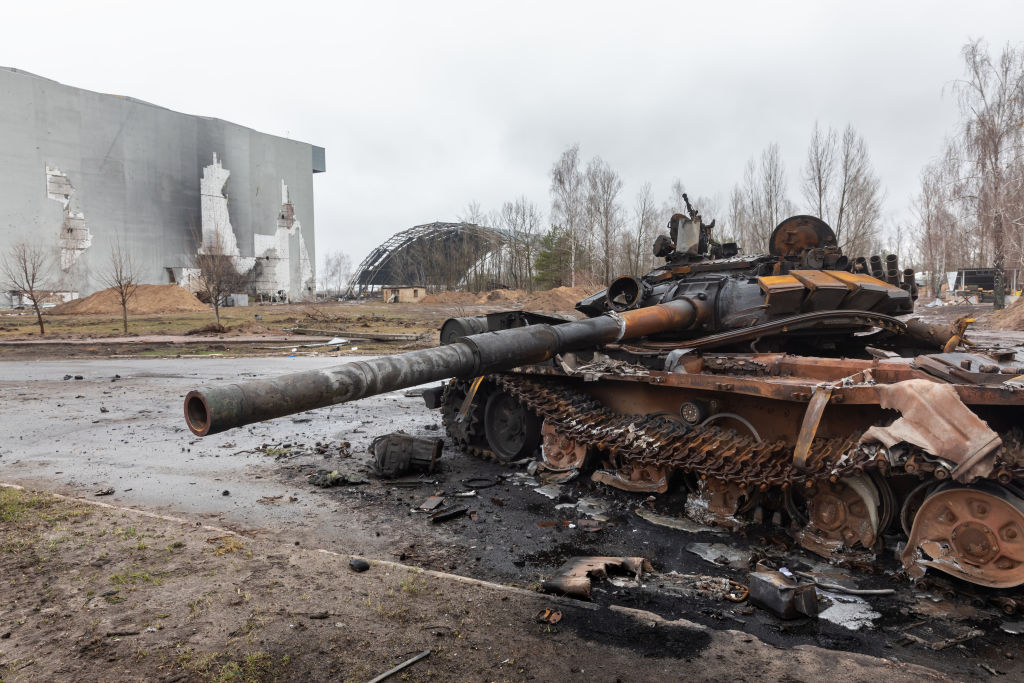

The war in Ukraine has been particularly lethal for Russian general officers, several of whom have died since February 2022.
The fog of war has made it difficult to keep track of Russian generals who have been killed. At the start of the war, the Ukrainians claimed to have killed 12 Russian general officers, but indications emerged afterward that some of those generals are still alive including Maj. Gen. Vitaly Gerasimov and Lt Gen Andrey Mordvichev, according to the BBC. Ukraine also claimed in September that it had killed Russian Adm. Viktor Sokolov, commander of the Black Sea fleet, in a missile strike, but video emerged afterward showing that Sokolov was still alive.
Task & Purpose has attempted to provide a tally of the Russian generals who have been killed since February 2022. This list is far from comprehensive because it does not include Russian losses due to mysterious circumstances, such as when Lt. Gen. Vladimir Sviridov was found dead along with his wife at their home in November.
Subscribe to Task & Purpose Today. Get the latest military news and culture in your inbox daily.
Russia is a place where people who have crossed the Kremlin often die by falling from high-rise buildings – in all fairness, those open windows can come out of nowhere.
Open sources indicate that at least seven Russian general officers have been killed in Ukraine:
Retired Maj. Gen. Kanamat Botashev
Maj. Gen. Roman Kutuzov (posthumously promoted to lieutenant general):
Ukraine has claimed that it has also killed Maj. Gen. Andrei Simonov, but Russian officials have not confirmed his death.

Ukraine’s use of effective drones combined with long-range fires has proven deadly for Russian generals and colonels, especially because the Ukrainians have specifically targeted senior Russian officers, said retired Marine Col. Mike Samarov, who managed a team for planning Russia, Europe, and NATO strategy and policy that advised the chairman of the Joint Chiefs of Staff.
At the start of the Ukraine war, the Russian army lost several senior leaders while trying to conduct offensive-level operations, Samarov told Task & Purpose.
“These types of operations tend to demand leader presence forward,” Samarov said. “Leaders forward tend to become casualties regardless of the level of cohesion that an institution possesses. Now that the Russian army is very much on the operational defensive (attempting to outlast Ukraine and its Western supporters), the demand for leaders forward is less, and so are the leader casualties.”
The deaths of so many Russian general officers at the start of the war also show the stark differences between the Russian and Western concept of senior leaders’ responsibilities, said retired Navy Capt. Steven Horrell, of the Center for European Policy Analysis think tank in Washington, D.C.
Of the general officers killed so far: Sukhovetsky, deputy commander of the 41st Combined Arms Army was killed by a sniper while fighting at Hostomel airport near Kyiv, Horrell noted. Separately, Kutuzov was killed in June 2022 while leading an operation. At the time, he oversaw a corps of troops from the Donetsk People’s Republic, part of eastern Ukraine that Russia formally annexed later that year.
“U.S. and Western leaders will do battlefield circulation, but these were in the fighting rather than commanding at what we would think of as the Corps or Army level,” Horrell told Task & Purpose. “This idea went an echelon or two lower as well – when convoys were stalled, colonels were on scene doing deconfliction and coordination we would expect captains or majors to do and were killed.”
That said, the Russians were able to learn from their initial failures and that slowed the loss of general officers for a time, Horrell said.
The Ukrainians also adapted to the changing battlefield conditions, as evidenced by the fact that two Russian generals were killed during Ukraine’s counter-offensive, he said.
“Ukraine’s successes in that time frame were in drones and other reconnaissance finding Russian command posts or artillery batteries and striking them with newly acquired, longer range, more precise strike capabilities,” Horrell said. “But the rhythm of move-countermove came into play – Russia did move CPs, logistics, etc. further back, and drones are back to being a draw.”
While the Russians’ loss of general officers is historically notable, the number of deaths is still relatively low, allowing the Russian military to replace the generals who have been killed, Horrell said.
“When a lot of people talk about or visualize Russian command and control as top-heavy or centralized, this is the echelon in question, but there are still replacements waiting in the wings,” Horrell said.
The latest on Task & Purpose
- US Marine is top student at Royal Marine Commando course
- Legendary Combat Controller from Task Force Dagger dies at 51
- Army must “increase” fitness standards, but can use gender-specific scores
- The Navy’s newest ship is named for a Medal of Honor recipient
- A new Army supercomputer gets a Medal of Honor namesake
